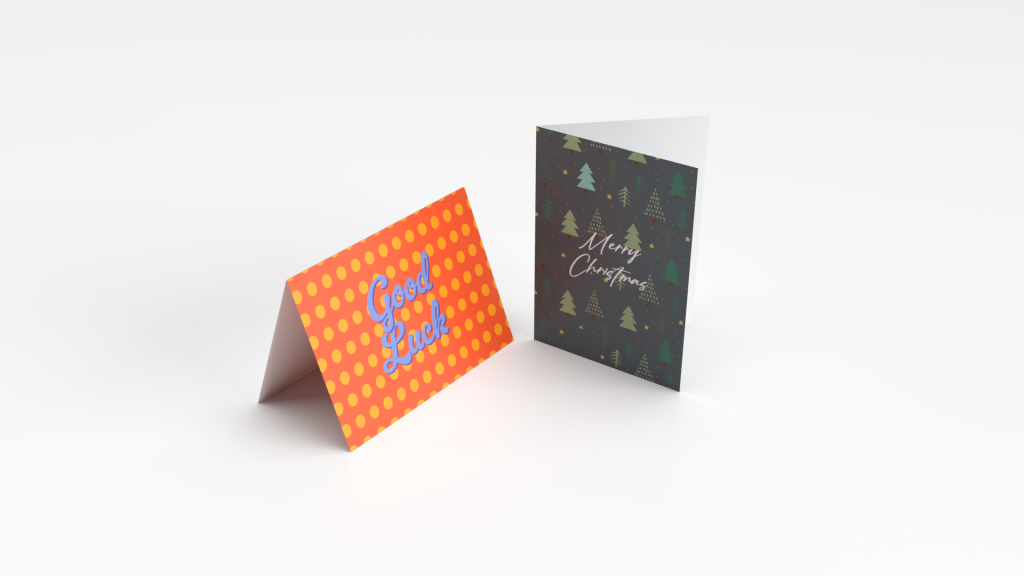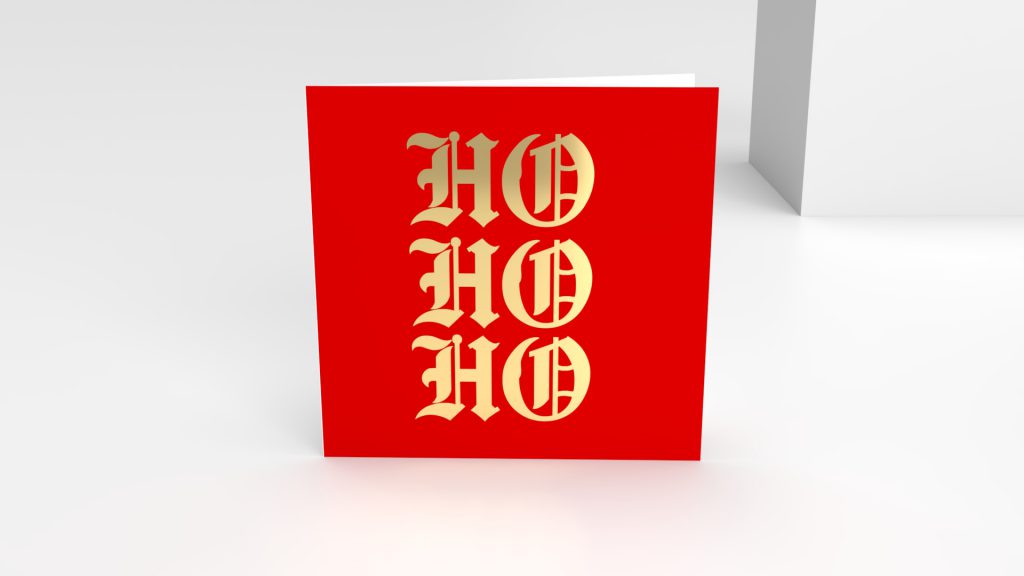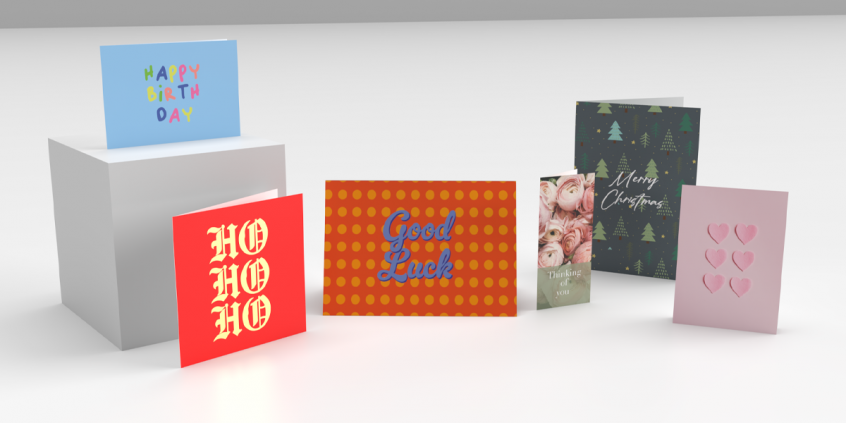Need help choosing the right greeting card options?
Navigating your way through the choices when curating your next greeting card might sound like a walk in the park. But with multiple different folding options and sizes to choose from, you might find it more confusing than you first expected.
Book or tent fold? Short or long edge fold? Landscape or portrait? Let’s look at some of these options and see which ones are right for you.
Book or tent fold.
When it comes to traditional greeting cards, there are two things to consider, whether you want a “Book” fold or a “Tent” fold. These orientations are quite straightforward. In a “Book” fold, the card’s spine is on the left-hand side when closed, making it easier to open it from the right-hand side. It sits flat on the ground with the short side facing up. The “Tent” fold runs along the top of the card, causing it to stand in an A-shaped stance. This is commonly used for landscape designs, providing more stability and a more canvas-like ratio for your artwork.

Short or long edge.
Another important aspect to think about is whether you want a “Short” or “Long” edge fold. This aspect relates to the card’s spine length. In most cases, the desired result is a rectangular-shaped card. When you fold along the flat card, you can choose to go along the longest centre from edge to edge or the shortest centre from edge to edge. Each type of fold has its own unique advantages, and your choice should take into account your intended design and content, as it can significantly impact the overall look of your card. A slim long edge card for instance looks elegant but offers a narrow canvas for your design.

Portrait or Landscape
You will need to decide whether your card will be in a “Portrait” or “Landscape” orientation. Typically, cards are designed to sit either vertically (portrait) or horizontally (landscape), unless you opt for a square card. Portrait cards are the most common choice because they make it easier to read your content or view your images from top to bottom, which is especially important if you have a meaningful message on the front. On the other hand, landscape orientation is better suited for cards that showcase artwork or images on the front, making it ideal for artists or photographers who want to display their work prominently.
Material
Selecting the perfect material for your greeting cards is a crucial decision because it’s the first thing you touch when you take the card out of the envelope. The thickness of the card matters—it’s what gives your card that luxurious feeling. Our top choice is 350gsm Silk, known for its durability and vibrant print quality.
For a more natural and rustic appearance, you can opt for brown kraft paper. Keep in mind that this material may not work well with all designs, so it’s best to stick with bold and dark colours when designing your card. If done right, a Kraft greeting card can give a unique and natural vibe.
Special Finishes
Like most printed products, there are a few special finishing touches that you can add to your order to elevate your print. With greeting cards, a popular finish is foiling. You can choose from blue, copper, gold, red or silver foil to highlight certain areas on your design to get it an extra sparkle.
Gloss lamination is another popular option, as it not only gives your final card a luxurious and shiny finish but adds a layer of protection to your print to keep the card in pristine condition for longer.

Tips to keep in mind when printing your greeting cards.
How to supply your files.
Make sure your files are ready for printing with Tradeprint. Please submit yur artwork as spreads, not separate pages. The outside pair should be combined as a spread, as well as the inside pair. Ideally, combine the outside and inside spreads into a single PDF file. This helps us process your order smoothly.
Orientation of your print.
This is geared towards tent fold cards. Inside artwork should be provided upside down. Our system flips the artwork from left to right during processing. If your inside design goes from top to bottom, it won’t back up correctly with the outside pages. For more information on the right file orientation, check our Help Centre article: “How to Prepare Greetings Card Files for Printing.”- How To Set Up Greetings Card Files For Print
CMYK
Designing for print is simple with free online tools, but most use RGB colours. For the best print outcome, please make sure your design software supports CMYK. This way, your card colours won’t change during printing, and you’ll get the exact look you want.
